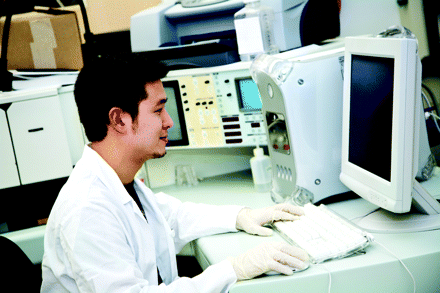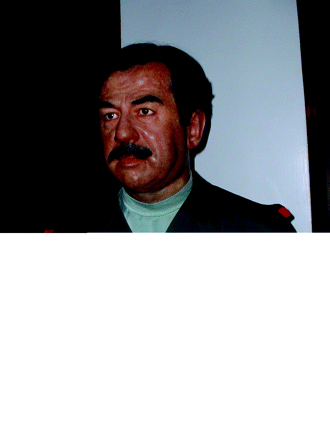1991–2000
Genomics and Friends
The 1990s brought the “genomic revolution” to fruition. In mid decade, sequences had been determined for Haemophilus influenzae, Saccharomyces cerevisiae, and E. coli. By the end of the decade, other crucial genomes were solved, including that of C. elegans, Drosphila, Arabidopsis (for plant enthusiasts), and even a working draft of Homo sapiens. The cloning of an entire sheep, by nuclear transfer from mammary tissue, made world headlines in 1997, and the realities of stem cell technologies and genetically modified foods fascinated (and frightened) every sector of society. Pharmacogenomics became a buzzword, encompassing the promise of personalized medicine, renewed expectations for biologics-based medicine, and ethical concerns about new diagnostic opportunities.

Science’s “Molecule/ Breakthrough of the Year”
| Year | Winner |
|---|---|
| 1991 | Buckminsterfullerene (C60 buckyballs) |
| 1992 | Nitric oxide |
| 1993 | p53 |
| 1994 | DNA repair |
| 1995 | Bose-Einstein condensate |
| 1996 | Reshaping the course of HIV infection |
| 1997 | Dolly the sheep (first mammal cloned from adult cells) |
| 1998 | Dark matter and the accelerating universe |
| 1999 | Stem cells |
| 2000 | Genomics |
Déjà Vu, Present and Future
In January of 1991, five months after Republican President George H.W. Bush had first issued warnings to Iraqi leader Saddam Hussein, US military forces commenced Operation Desert Storm to end Iraqi occupation of Kuwait. Kuwait City was liberated in February, the US effort was deemed complete, and Secretary of Defense Richard Cheney received the Presidential Medal of Freedom for leadership in the Gulf War. Residency of the White House nevertheless passed to Democrat Bill Clinton in 1992, following a campaign on economic issues. Clinton ruled for two terms, after which a second Bush took office, narrowly defeating Vice President Al Gore. The November election of George W. Bush and running mate Dick Cheney was tediously disputed for weeks, until the Supreme Court ruled on Florida’s twenty-five Electoral votes.
Between Bushes
Sex and politics were inseparable in 1990s news coverage. Senate confirmation of Judge Clarence Thomas, nominated to the Supreme Court by George H.W. Bush, was upstaged when law professor Anita Hill was subpoenaed to reiterate sexual misconduct charges she had once alleged as Thomas’s colleague. Allegations of sexual impropriety had also followed Bill Clinton into the Oval Office, and these persisted into his 1996 second-term campaign against Republican challenger Bob Dole. But nothing could have prepared the US public for the saga that would be dubbed “Monicagate. ” Sexual relations with White House intern Monica Lewinsky, initially denied by Clinton but verified by DNA analysis, came to light during a sexual harassment case waged by Arkansas state employee Paula Jones. After a well-publicized investigation, Clinton faced articles of impeachment from the House of Representatives in late 1998; in early 1999, a Senate vote resulted in acquittal. At decade’s end, exit polls cited “moral character” as a deciding factor among American voters.
Just Say NO
In 1992, disappointing studies of sildenafil for angina treatment were salvaged when Pfizer scientists noticed increased erectile activity in treated men. That same year, Science magazine auspiciously chose nitric oxide as “molecule of the year, ” presaging the 1998 Nobel prize awarded to pharmacologists Robert Furchgott, Louis Ignarro, and Ferid Murad for their discovery of NO signaling in the cardiovascular system. Pfizer received approval from the FDA, also in 1998, to market sildefanil, which inhibits phosphodiesterase activity and thus potentiates cGMP-mediated NO signaling, as Viagra. At product launch, Pfizer hired none other than the vanquished Clinton adversary, Bob Dole, as direct-to-consumer spokesperson for a series of help-seeking advertisements for erectile dysfunction. Viagra quickly became a blockbuster drug, endorsed by Playboy publisher Hugh Hefner as “the greatest recreational drug to come along since the sixties. ”

Nerds Online
In 1996, Stanford graduate student Larry Page began a computer science project to assess the utility of the World Wide Web. The project soon morphed into Google, Inc., which by 2000 was the vanguard cybertech company, receiving eighteen million queries to Google.com per day. The push to digitalize, archive, and disseminate information resonated forcefully in the fast-paced, data-driven, publish-or-perish biomedical community. In mid decade, the Journal of Biological Chemistry, Science magazine, and PNAS stood out amid the canonized literature going online. The information landscape that had been shaped over many decades by pharmacologists, physiologists, immunologists, and clinicians suddenly began to transform, challenging researchers with new questions about data ownership and management, peer review, and the economic sustainability of the new publishing business.


- © American Society for Pharmacology and Experimental Theraputics 2008








